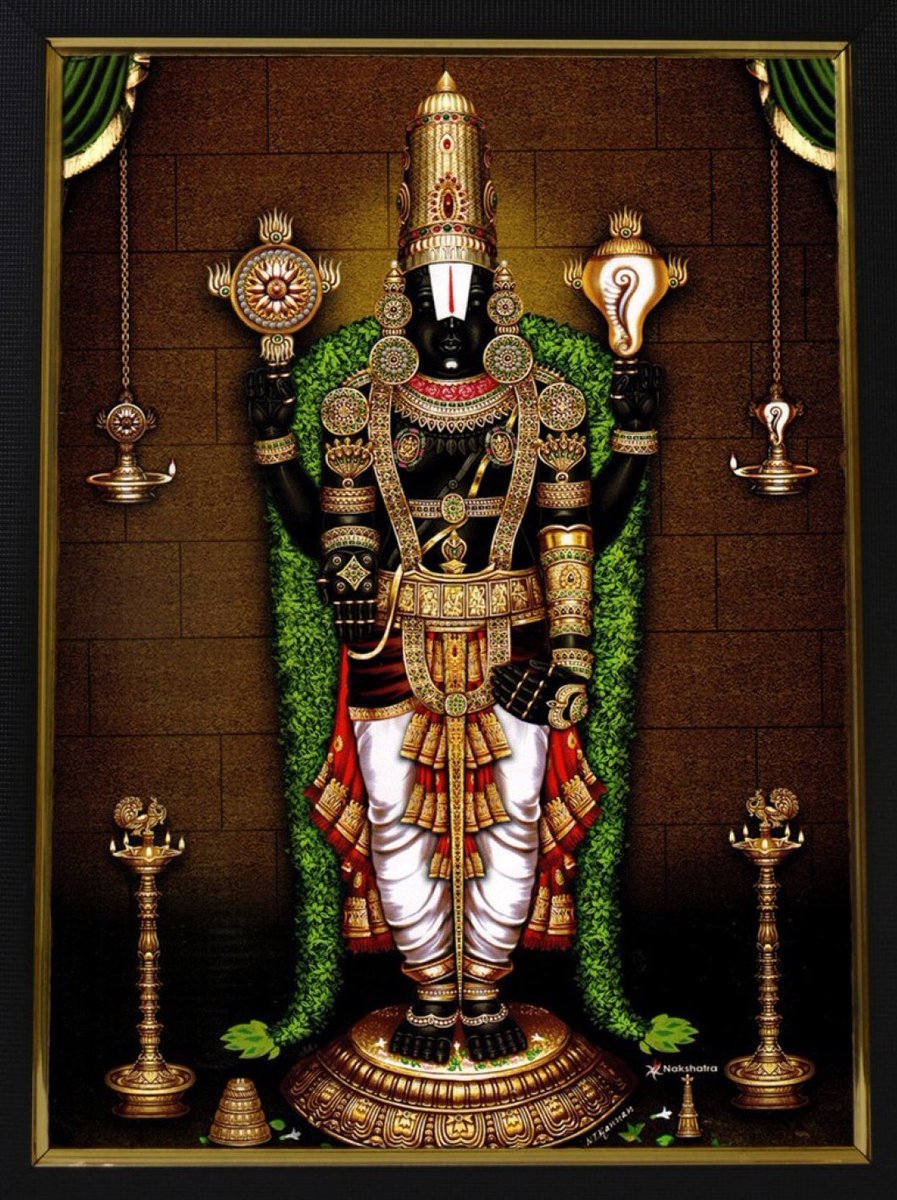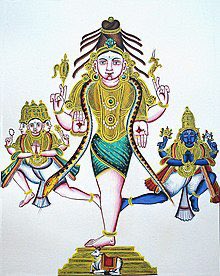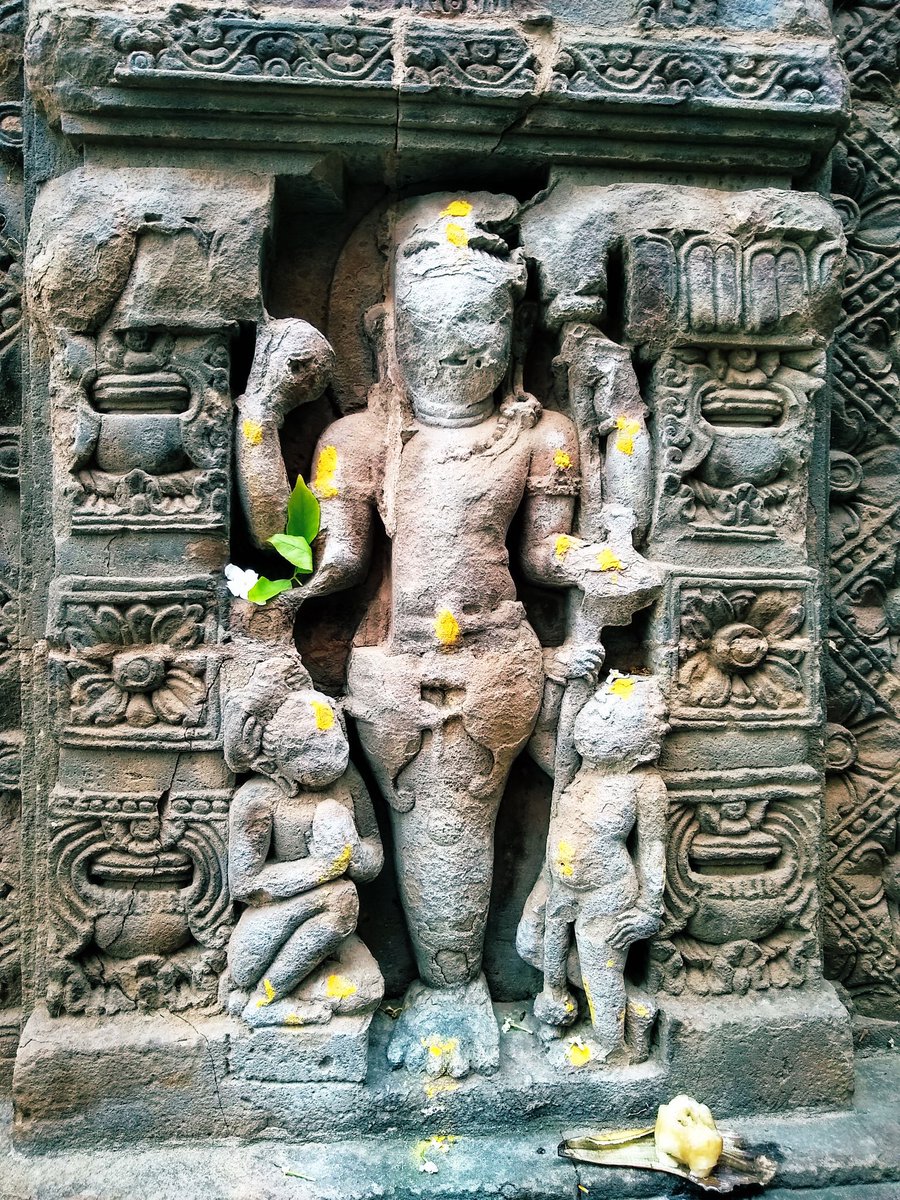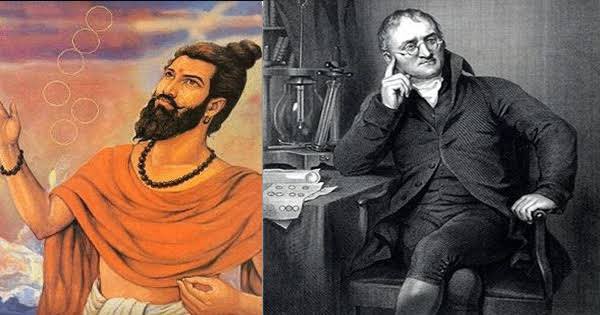
Yogic Kriya or Shuddhi Kriyas (Body Purification Techniques) and their Benefits
Yogic Kriyas are cleansing techniques that cleanse various internal organs of the body.
They are also called shatkriyas or shatkarma (Sanskrit: षटकर्म ṣaṭkarma, six actions),
#Longthread
Yogic Kriyas are cleansing techniques that cleanse various internal organs of the body.
They are also called shatkriyas or shatkarma (Sanskrit: षटकर्म ṣaṭkarma, six actions),
#Longthread

Shatkarma is a set of 6 cleansing techniques of ‘Hath Yoga’ to flush out impurities of the internal body.
They are preventive as well as curative in nature. These kriyas create space in the human temple for the living spirit — they detoxify the body, the bloodstream, the nervous
They are preventive as well as curative in nature. These kriyas create space in the human temple for the living spirit — they detoxify the body, the bloodstream, the nervous
system, brain, nadis, mind, thought patterns, and negative tendencies.and lead one towards an enlightened body, mind and spirit.
Following are the main Six Kriyas
1- Neti, 2- Dhauti, 3- Basti, 4-Trataka, 5-Nauli and 6-Kapalbhati
Following are the main Six Kriyas
1- Neti, 2- Dhauti, 3- Basti, 4-Trataka, 5-Nauli and 6-Kapalbhati
1- Neti kriyas (Cleansing of Nasal Passages) and its benefits–
Neti Kriya is a type of Yogic nasal cleansing exercise. It is designed to purify the nasal passages and bathe the sinuses.
They are said to remove toxins and anything blocking the flow of prana or energy in the body
Neti Kriya is a type of Yogic nasal cleansing exercise. It is designed to purify the nasal passages and bathe the sinuses.
They are said to remove toxins and anything blocking the flow of prana or energy in the body
Neti is basically of 2 types, based on their procedure
•Jala Neti – In this neti, Jala (water) is used as a cleaning tool to remove the impurities of nostrils.Using the neti pot, water is poured in through one nostril & then under the effect of gravity,it’s expelled out another
•Jala Neti – In this neti, Jala (water) is used as a cleaning tool to remove the impurities of nostrils.Using the neti pot, water is poured in through one nostril & then under the effect of gravity,it’s expelled out another
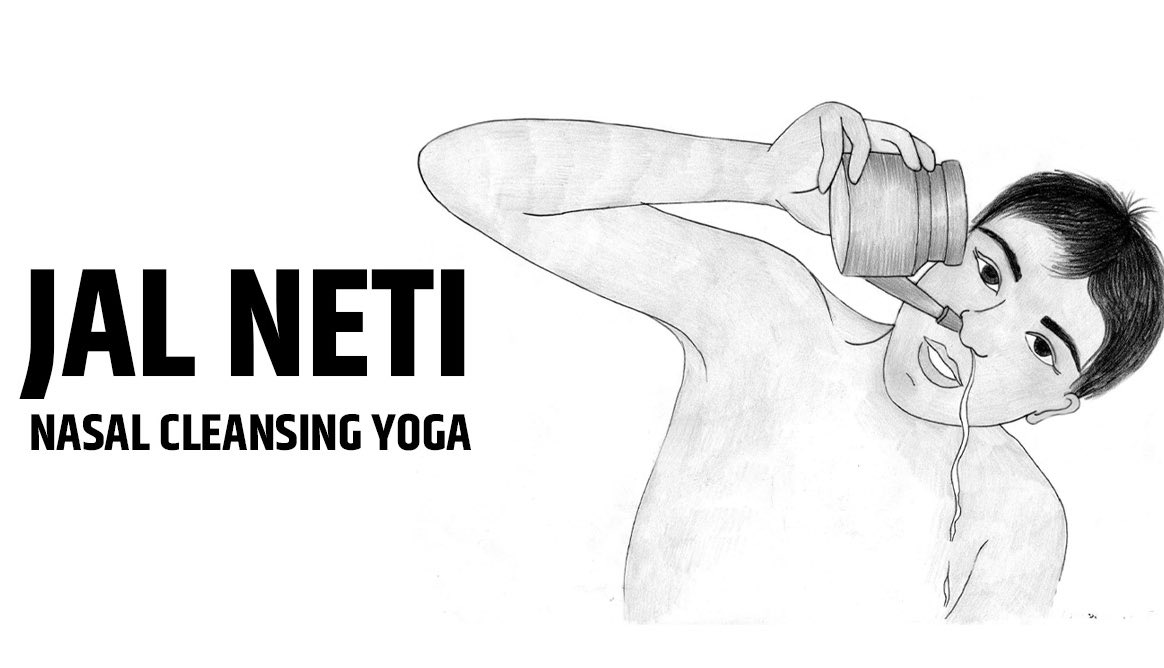
nostril. Water that comes out from other nostril removes impurities from nasal pathways.
•Sutra Neti – In this neti, a rubber thread (sutra) is used to massage the nasal pathways in such a manner that it opens any blockages present in nostrils.
•Sutra Neti – In this neti, a rubber thread (sutra) is used to massage the nasal pathways in such a manner that it opens any blockages present in nostrils.

2- Dhauti Kriya (Cleansing of Digestive Tract) and its benefits–
In Sanskrit, Dhauti means ‘washing‘ or ‘cleansing‘. In this process, water is drunk to full capacity which let impurities flush out from the food pipe by vomiting.
Some common types of Dhauti are:
In Sanskrit, Dhauti means ‘washing‘ or ‘cleansing‘. In this process, water is drunk to full capacity which let impurities flush out from the food pipe by vomiting.
Some common types of Dhauti are:

•Vamana Dhauti – Drinking a large quantity of lukewarm water and then vomit it out to removes extra mucus from the food pipe. It’s also called Kunjal kriya.
•Vastra Dhauti – In this dhauti kriya, a clean muslin cloth drowned in tepid water is swallowed and held in the
•Vastra Dhauti – In this dhauti kriya, a clean muslin cloth drowned in tepid water is swallowed and held in the
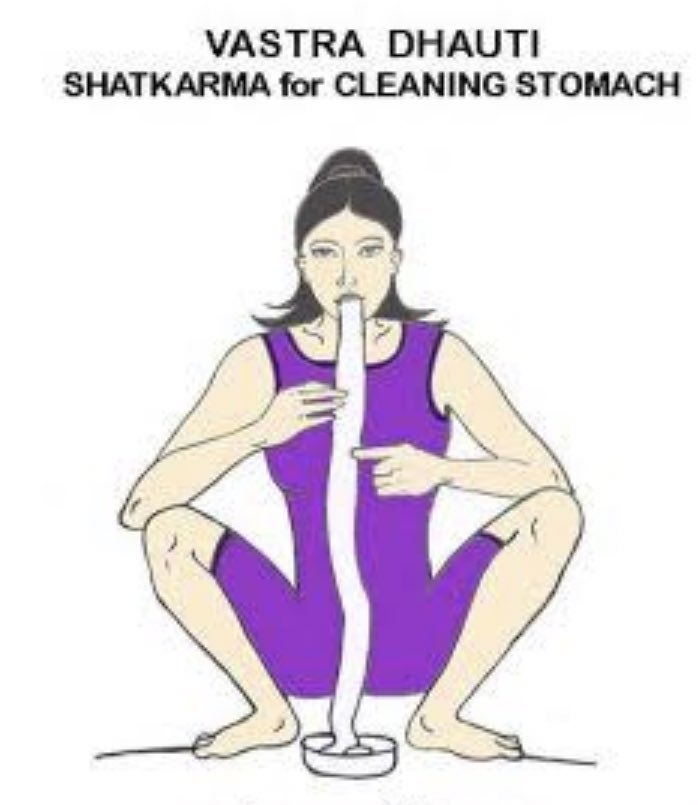
stomach for a few minutes. Then it’s pulled out from mouth end that brings out impurities intestinal tract.
Dhauti kriya helps the internal organ system to work efficiently and remove excess mucus from the stomach.
Dhauti kriya helps the internal organ system to work efficiently and remove excess mucus from the stomach.
3- Basti kriya (Cleansing of Large Intestine) and its benefits :-
Basti is the 3rd shatkarma which is said to cure almost 50% of abdominal diseases.
In this technique water is drawn in through the anus in the large intestine and then abdominal muscles are churned
Basti is the 3rd shatkarma which is said to cure almost 50% of abdominal diseases.
In this technique water is drawn in through the anus in the large intestine and then abdominal muscles are churned
while holding water inside. After churning, water is expelled out through the anus.
It directly works on the purification of the central organ of the body called the colon (large intestine). Colon nourishes almost all tissues of the body (colon is a long tube-like organ
It directly works on the purification of the central organ of the body called the colon (large intestine). Colon nourishes almost all tissues of the body (colon is a long tube-like organ
in the lower belly that removes water from digested food and is mostly disturbed by solid waste (faeces).)
4- Trataka Kriya (Cleansing of Eyes) and its benefits:-
Trataka kriya is one of the best eye exercises that involve steady and continuous gazing at any reference point.
4- Trataka Kriya (Cleansing of Eyes) and its benefits:-
Trataka kriya is one of the best eye exercises that involve steady and continuous gazing at any reference point.

The reference point in the trataka practice could be any external object. The most common object used in Trataka for reference point is an Illuminated Candle.
Among 6 shat kriyas, trataka is known for its simplest procedure. Consistent and correct practice of trataka
Among 6 shat kriyas, trataka is known for its simplest procedure. Consistent and correct practice of trataka
increases concentration power and purifies the mind from fluctuated thought patterns.
5- Nauli Kriya (Cleansing of Abdominal Organs) and its benefits
In Nauli kriya, rectus abdominis or abs muscles are isolated either left or right or at middle of
5- Nauli Kriya (Cleansing of Abdominal Organs) and its benefits
In Nauli kriya, rectus abdominis or abs muscles are isolated either left or right or at middle of
the linea alba (anterior wall in the abdomen).
On taking linea alba as a middle reference, the isolation of abs muscles on either side of it classifies Nauli into 3 types.
1-Madhya Nauli 2- Vama Nauli 3- Dakshina Nauli
It is a necessary yoga kriya that maintains movement in all
On taking linea alba as a middle reference, the isolation of abs muscles on either side of it classifies Nauli into 3 types.
1-Madhya Nauli 2- Vama Nauli 3- Dakshina Nauli
It is a necessary yoga kriya that maintains movement in all

muscles of the body. Nauli practice purifies the liver, spleen, urinary bladder, pancreas, gall bladder, and the intestines by its massaging effect. When all these internal organs regularly movements, the practitioner’s digestion system and appetite improve.
6- Kapalbhati Kriya (Cleansing of Frontal Lobes) and its benefits :-
Kapalbhati is the last Shatkarma that works on improving the functioning of the brain.
In kapalbhati, the abdominal wall rapidly draws in and out in conjunction with the breathing.
Kapalbhati is the last Shatkarma that works on improving the functioning of the brain.
In kapalbhati, the abdominal wall rapidly draws in and out in conjunction with the breathing.
Here, in Kapalbhati pranayama, the breathing is quite different from normal breathing. In normal breathing, Inhale is active (more focused) while the exhale is passive (less focused).
In Kapalbhati breathing,
• Exhale is active (more focused) while the inhale is
In Kapalbhati breathing,
• Exhale is active (more focused) while the inhale is

passive (less focused).
By emphasizing more on exhaling as compare to inhaling, kapalbhati expels more impurities out in the form of CO2 gas.
👉**Precautions to take for shatkarma practice**
1. Practice Under the Supervision of an expert guide only
By emphasizing more on exhaling as compare to inhaling, kapalbhati expels more impurities out in the form of CO2 gas.
👉**Precautions to take for shatkarma practice**
1. Practice Under the Supervision of an expert guide only
2- Don’t practice it everyday. (especially the first 3) it should be practised once a week only when u feel that your inner body needs cleansing
3- Use clean and sterile equipments
4. Pregnant women shouldn’t practice Shatkriyas
5. Lighten up ur diet
6. Keep calm while practicing
3- Use clean and sterile equipments
4. Pregnant women shouldn’t practice Shatkriyas
5. Lighten up ur diet
6. Keep calm while practicing
• • •
Missing some Tweet in this thread? You can try to
force a refresh



